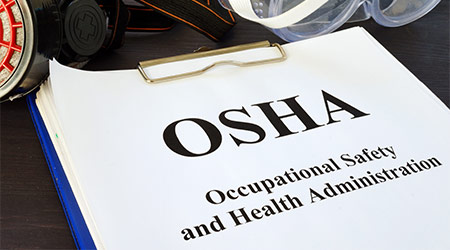Worker protection has remained in the spotlight throughout the COVID-19 pandemic, sparking numerous legislative changes, regulatory updates and increased litigation. Due to the pandemic, The Occupational Safety & Health Administration (OSHA) has been under increased scrutiny to enhance enforcement as eliminating COVID-19 associated hazards remains a top priority. It is certain that while the pandemic trudges on, OSHA will play an instrumental role in ensuring safe and healthy conditions for America's workers.
In addition to currently existing OSHA regulations now required for healthcare facilities to be in compliance, the passage of new OSHA standards will occur over the next several years. A handful of states have already implemented COVID-specific worker safety regulations and the trend is anticipated to expand. In light of the new administration and congress, impending federal legislation is also likely.
These are unique times in which facilities must navigate both new and old regulatory requirements and obligations, in order to maintain a safe workplace during the pandemic. There are a number of steps healthcare facilities can take now to help minimize liability and confirm regulatory compliance.
Facility managers should start by conducting a review of their facility’s current OSHA programs and ensure they comply with existing regulations. Managers should revise plans to incorporate COVID-specific details, as required.
Next, evaluate existing education and training programs and update them to include COVID-19 protocols, as required by law.
If they don’t already have one, facility managers should consider implementing an Infectious Disease Preparedness and Response Plan, which provides specific protocols and procedures to help protect workers against the spread of SARS-CoV-2.
Each staff should have an assigned team member to keep up-to-date with emerging regulations, legislation, and legal changes surrounding worker protection.
Finally, have someone in the organization speak with legal counsel regarding potential protections you can put in place now to better protect your workers now and in the future.
While much remains unknown regarding the length of time this pandemic will continue, it is essential for healthcare to make their good faith efforts towards worker protection. Employers will continue to play this essential role through this pandemic and beyond. The time to prepare is now.
Shari L. Solomon, Esq. is president and founder of CleanHealth Environmental, LLC. CleanHealth provides infection prevention and industrial hygiene training and consulting services geared toward facility personnel and vendors responsible for infection prevention, cleaning and disinfection, and facility operations and maintenance practices. Ms. Solomon possesses more than 20 years of environmental consulting and federal regulatory experience. An attorney by trade, combined with her experience in the industrial hygiene field with a focus on healthcare, Shari holds a unique expertise and understanding of liability prevention techniques, offering clients practical and valuable risk management solutions.

 Building Disaster Resilience Through Collaboration
Building Disaster Resilience Through Collaboration Amae Health Expands to New York City
Amae Health Expands to New York City Hospital for Special Surgery Opens Two New Facilities in New Jersey
Hospital for Special Surgery Opens Two New Facilities in New Jersey Should We Be Testing Toilet Water in Patient Restrooms?
Should We Be Testing Toilet Water in Patient Restrooms? Healthcare Union Petitions for Increased Staff Safety at HCA Florida Hospitals
Healthcare Union Petitions for Increased Staff Safety at HCA Florida Hospitals